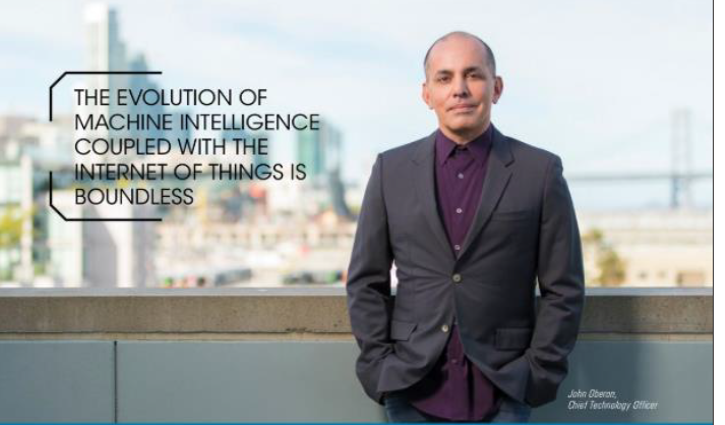The technology world continues to advance at a rate that boggles imagination. What seemed improbable five years ago is now commonplace as industry standards. If history serves as a guideline, we are embarking on another plateau of capability and consumption. The question is how do meta disruptions impact innovation, and what do we do about it? In order, to gauge this, let’s first define the space and how we will most likely get there.
Value of Data
If we can define Machine Intelligence as the ability to manipulate data for some business value, then the heart of this is around data. There are countless articles around why data is important, yet many enterprises are still grappling with some basic and startling statistics:
- Less than 1% of data is actually being used to run a business
- 80% of the time is being used to get data into a consumable manner
- The rate of data generation is well beyond exponential growth – tetration phenomenon
- The security attack surface area continues to grow, but enterprises need even more control around data sensitivity, attestation, and retention
What makes things more complicated is the notion of business ROI: at what point does a company start seeing value – time and/or money – when embarking on this journey to gain sustainable business advantage?
To help structure a position that requires innovation, let us further define the value of analytics vis-à-vis the maturity and type of intelligence needed.
- Descriptive hindsight. It starts our journey my managing all forms of data ingestion. Data ingress, cleansing, and curation is required to perform at a higher level of understanding
- Diagnostic Insights. Once we have the set of data described, we can start looking for patterns with a model
- Predictive Foresight. We can now run and simulate models to determine the most likely outcome. This is when business starts to see economic value
- Prescriptive framework. Knowing what will happen is very important, but what do you do about it? A prescription given a known set of events (e.g., launch airbag before the car hits a wall) is key to start gaining economic advantage
- Self-Healing Ecosystems. If the system of record is smart enough to auto-correct, massive disruption will happen in that industry
In other words, the business goal needs to be articulated in a manner that can be measured, and a model needs to be created so a business can obtain a sustainable advantage. This requires a solution that can not only traverse around the analytical value journey, but also work in a manner that a system can adapt just-in-time within a LOB workflow. At present moment, the arbitrage is large, yet the tools and existing systems are nascent.
However, the rate of technology adoption is accelerating, creating an interactive link between the physical and digital worlds. This leads us to mapping the value beyond the hype.
Compute at the Edge
If we consider that IoT are things connected to the internet, and that these things are communicating with each other in some structured manner, then we can arrive at some level of abstraction:
- Things can be at the edge of the network. In other words, how one connects – Cellular, special radio, wireless, wired - is an important ingredient
- Configuring these things needs to be dynamic and JIT (just in time) to enable a business outcome
- We need to account for the primitives that constrain capability: frequency, protocol, serialization, packet size, and number of endpoints
With this in mind, an IoT device can be configured just in time so that the system can buffer, stream, event, and potentially store data.
Rapid technological advances in machine intelligence have been reshaping the business landscape and enabling the emergence of new business innovations in different forms of devices or services. Together MI and IoT amount to a step change in technical capabilities that could have profound implications for business, for the economy, and more broadly, for society.
MI & IoT – A Marriage made in Data
“The Analytical Engine has no pretensions whatever to originate anything. It can do whatever we know how to order it to perform”. - Ada Lovelace, the first computer programmer
This marriage of Machine Intelligence and IoT will create a new dominant paradigm that will impact all verticals. I am positing the following patterns and practices will directly impact innovation:
- The model will go to the data. Historically, data is moved to perform some transaction – this is a costly effort that is prone to security and sensitivity constraints that we spoke about earlier. By providing a system of record that only allows vetted models to access the data within an IoT device, scale, response, and quality will be better assured.
- Disruptions will start in the form of automation. RPA and other workflow process automation efforts will continue to be popular in 2020. Just-in-time adaptability will take over this layer with Machine Intelligence building blocks.
- Consumers will no longer discern between another human and a machine. In the next 18 months, there will be more machines answering service calls than people. Context sensitive machine capabilities have outstripped human discrepancy.
- Virtual Identities will unify. Imagine a world where we could create a virtual twin of ourselves. A twin that has the physiology, psychology, and even metaphysics on your essence. This will create new ecosystems around consumer identity management, but the ramifications around verticals like healthcare, defense, fashion, etc. will all feel this disruption.
In summary, the evolution of Machine Intelligence coupled with the Internet of things is boundless. New capabilities are being found every week as the tools and systems realize that these two powerful ideas are two sides of the same coin. May the power of data be with you, and the tools help you realize the competitive edge.
Source: CIO Insider

